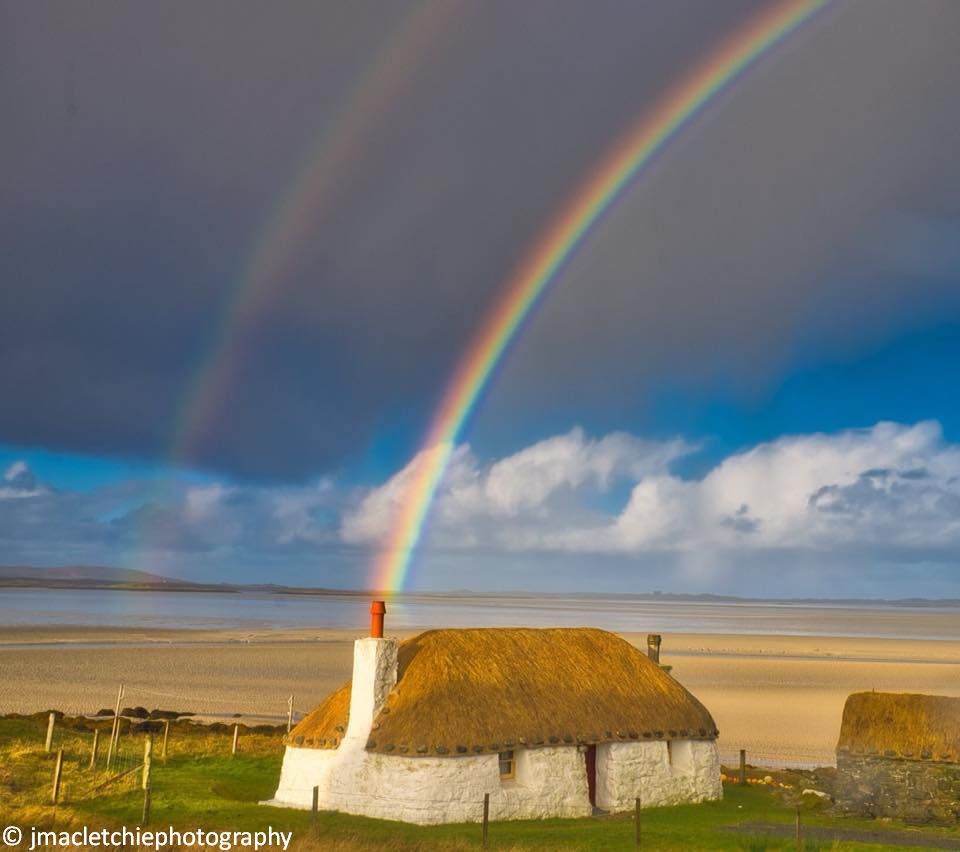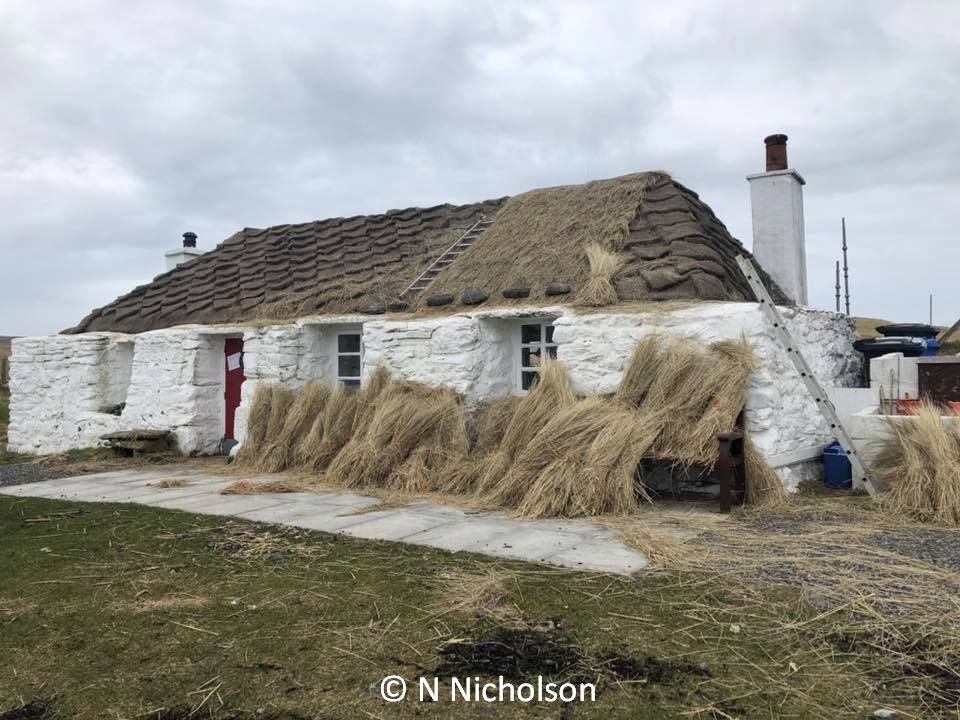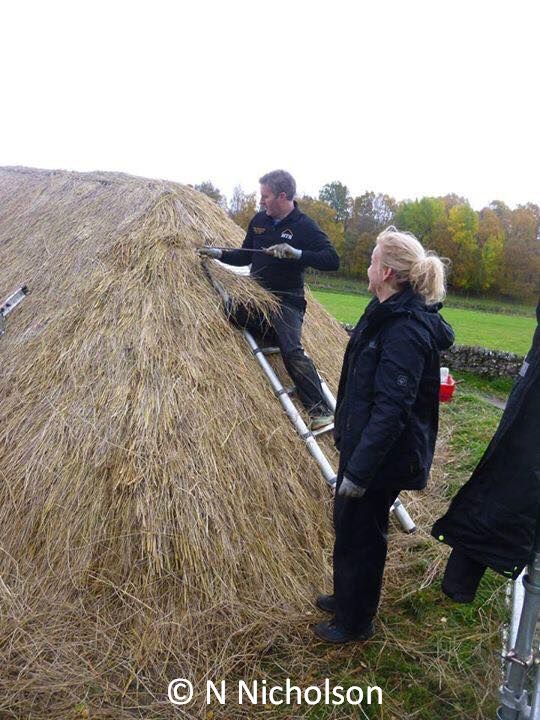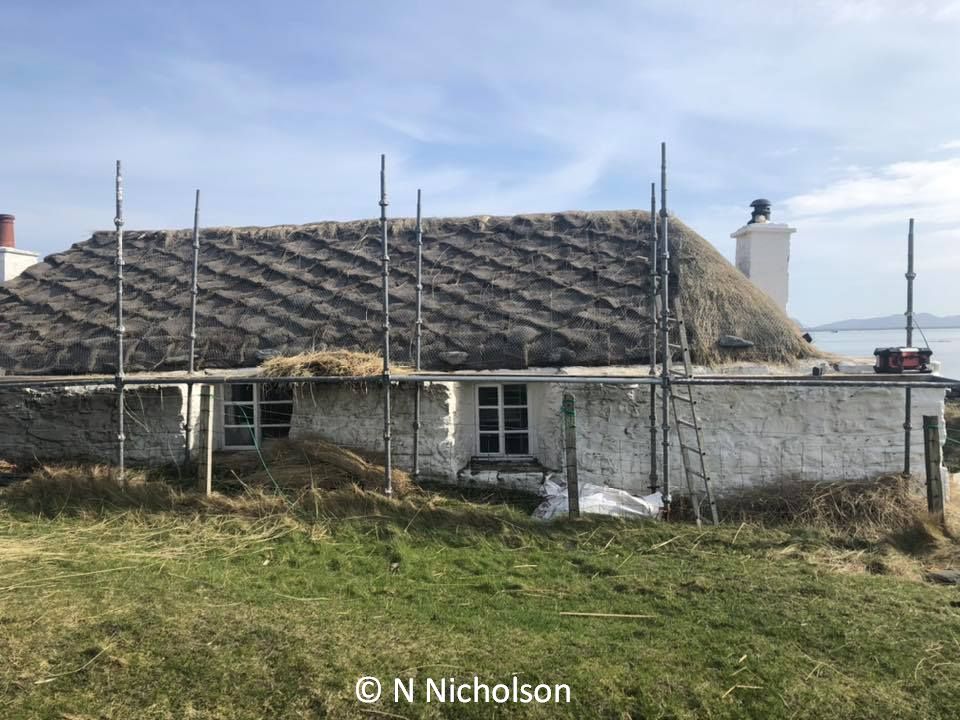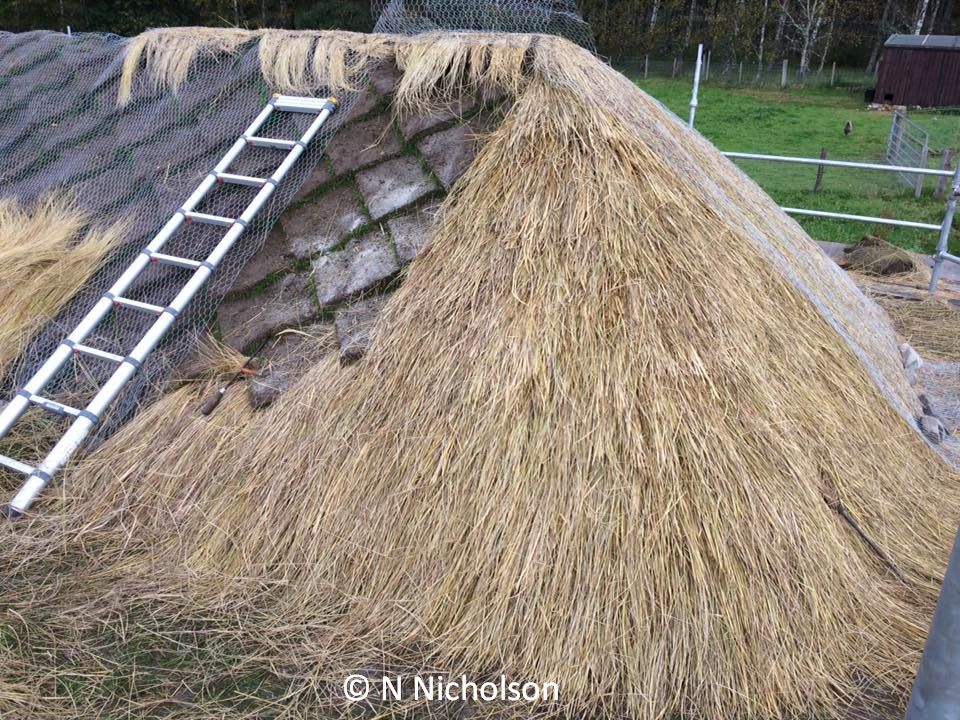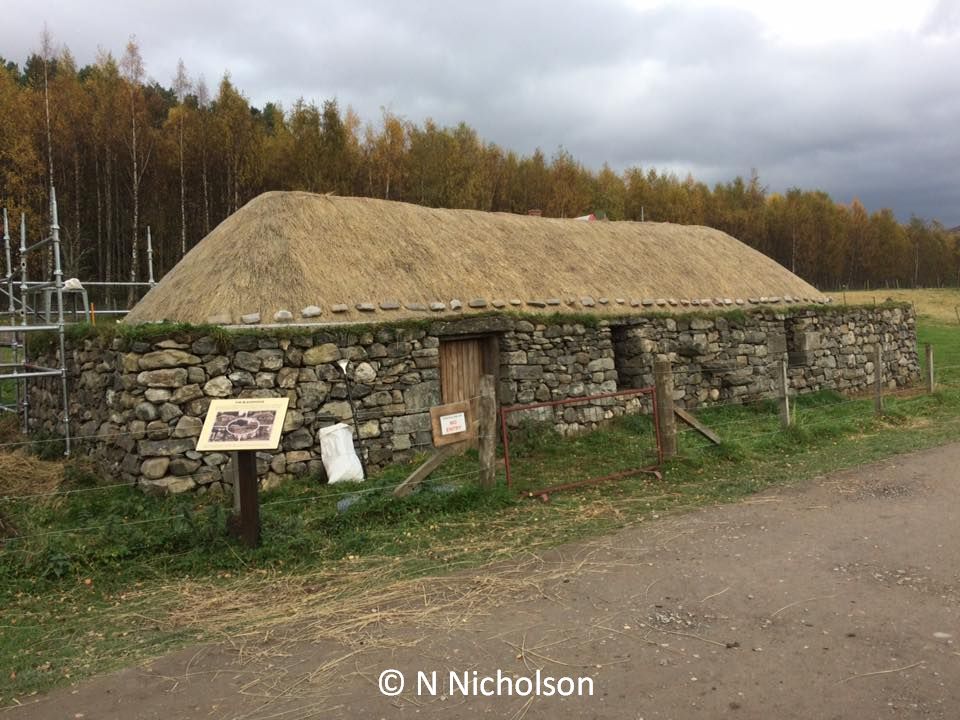Thatching roofs in the UK is not just about straw and water reed, we thought it was time to look at Marram Grass thatching.
What is Marram Grass?
Marram grass is a tough spiky plant that grows on the edge of the sea, in sand dunes that are stabilized by its roots. This grass can withstand the very strong winds containing sand and it grows to around three feet in height. The dry plant looks like a small version of water reed and it is a lot tougher than most cereal straw. In the same way as water reed, Marram grass needs to be regularly cropped to get a useful harvest for thatching.
Marram grass was used in coastal areas eg. from Wales to the Isle of Man and Ireland to Scandinavia. Today Marram roofs are only found in the Hebrides, Scotland.
Scottish Thatch
Scotland only has around 300 remaining thatched buildings, a quarter of which are in the Western Isles, which is where Marram is most used. After the 2nd World War government building grants meant thatched cottages in Scotland were side-lined in favour of more spacious non thatched houses. Recently tourism has helped thatched holiday homes popularity, so they are being better maintained. Some new properties are also requesting thatch. It is unlikely these will be in Marram Grass.
Marram Grass Thatcher
Neil Nicholson is one of very few people who know how to thatch with Marram grass and the only one to make a living from it in the Western Isles. Neil has been thatching with Marram Grass for around a quarter of a century.
He was first introduced to the craft by his Grandparents, who built and thatched their own family home in North Uist. His father gave him a partially thatched croft to renovate and he learnt in reverse by taking off the thatch!
Thatching with Marram Grass
The technique of applying Marram Grass is very different than straw or reed. Firstly, turfs are laid on the timbers and the Marram is applied on top and held down with ropes and stones. For maintenance, after 3-10 years the outside layer breaks down and is then ready for its new coat. The grass is pushed into the old thatch, either by hand or with a pronged tool and none of the old thatch is removed. This is all held in place with stone weights on ropes. This is then strong enough to withstand the high winds and extreme weather.
Highland Folk Museum
The Highland Folk Museum, Newtonmore was awarded a grant from Historic Environment Scotland (HES) to re-thatch the roof of the Blackhouse, in Marram grass. The original building was originally erected in Kingussie. It was built by a Herbiden in the 1890s. It had fallen into disrepair (early 2010’s) and was moved and reconstructed at Newtonmore in 2013.
The Blackhouse was rethatched by Neil Nicholson in September 2017. The thatching was completed using traditional tools. Davie Cameron, a local Blacksmith, reproduced some of the thatching tools used. The Marram grass was gathered from the tiny Islands of North Uist, most of which are only accessible by small boat a couple of times a month. It takes skill and local knowledge to judge the tides and weather conditions in this area.
It was important for Neil to use Marram Grass to re-create an authentic Blackhouse as well as continuing to use the specialist skills necessary.
More information
There are some interesting points to note on marram grass:-
- Marram dampens the noise of the wind. The buildings are very quiet inside despite the strong winds and rain outside.
- The grass can withstand strong winds containing sand.
- Lack of thatchers with Marram Grass knowledge and difficulty in recruiting trainees is perceived as a potential problem for the future.
- Other thatching materials are easier to source. With climate change bringing more storms, rain and high tides the marram grass doesn’t get a chance to recover. Also high tides are the biggest killer of sand dunes which is where the grass grows.
- More thatchers know how to apply other thatching materials which are also more easily sourced e.g. Water Reed but it is not traditional. We suppose at least it is thatch. This has to be better than buildings falling into disrepair but we are hopeful that the marram grass material, thatching knowledge and skills will be preserved.
And finally
Thanks to Neil Nicholson for his input and wonderful pictures on this fascinating thatching material and for maintaining the historic craft skills.
We are pleased to include some interesting links to marram grass thatch.


